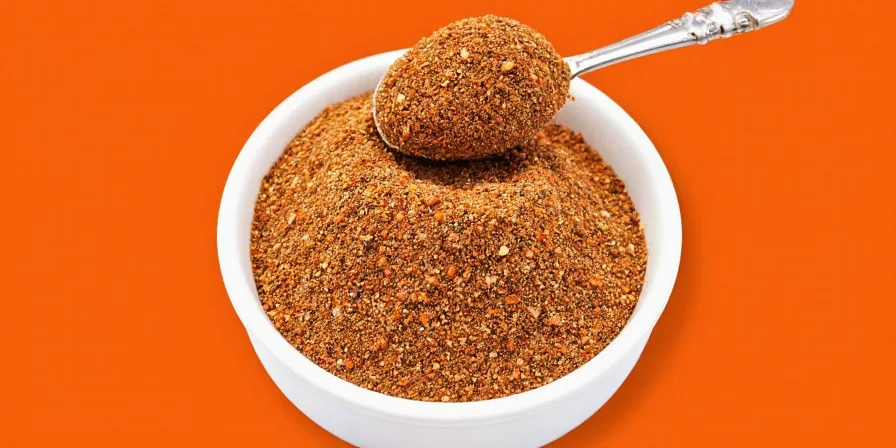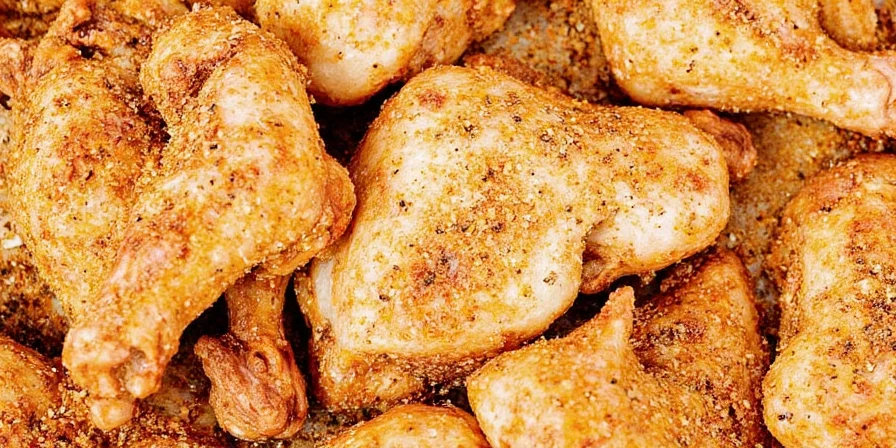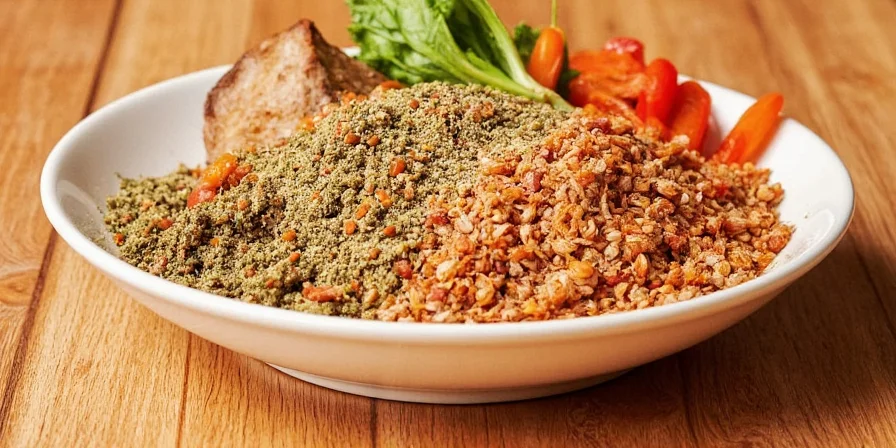Chicken seasoning is a spice blend primarily made of salt, garlic powder, onion powder, paprika, and herbs specifically formulated to enhance poultry's natural flavors. Unlike single-ingredient spices, this versatile blend creates balanced seasoning through carefully calibrated ratios that work synergistically during cooking. Whether you're using store-bought blends or making your own, understanding what goes into chicken seasoning and how to use it properly transforms ordinary meals into consistently flavorful dishes. This guide reveals practical applications, ingredient breakdowns, and simple homemade recipes that work for weeknight dinners and special occasions alike.
Table of Contents
- What Is Chicken Seasoning? Simple Definition & Core Purpose
- Common Ingredients in Chicken Seasoning (With Practical Uses)
- Popular Chicken Seasoning Variations You Can Try
- How to Use Chicken Seasoning: Practical Applications for Home Cooks
- Pro Tips for Best Results with Chicken Seasoning
- Easy Homemade Chicken Seasoning Recipes
- Common Chicken Seasoning Myths Debunked
- Why Understanding Chicken Seasoning Matters for Better Cooking

What Is Chicken Seasoning? Simple Definition & Core Purpose
Chicken seasoning is a pre-mixed spice blend designed to enhance the flavor of poultry dishes. Unlike single spices, it combines multiple ingredients in specific ratios to create balanced seasoning that works consistently. Most commercial blends contain salt, garlic powder, onion powder, paprika, black pepper, and dried herbs like thyme or rosemary. Despite the name, many chicken seasonings contain no actual chicken ingredients—they're simply formulated to complement poultry's natural flavors.
The primary purpose of chicken seasoning is to simplify the seasoning process while ensuring balanced flavor. Instead of measuring multiple individual spices, home cooks can use a single blend that delivers consistent results. This is especially helpful for weeknight cooking when time is limited but good flavor matters.

Common Ingredients in Chicken Seasoning (With Practical Uses)
Understanding what's in chicken seasoning helps you use it effectively or create your own blends. Here's what you'll typically find:
- Salt – The foundation that enhances all other flavors and helps with browning
- Garlic powder – Adds savory depth without burning like fresh garlic
- Onion powder – Provides sweetness and complexity
- Paprika – Contributes color and mild sweetness (smoked paprika adds depth)
- Black pepper – Adds subtle heat and helps other flavors penetrate
- Dried herbs – Typically thyme, rosemary, or sage for earthy notes
| Ingredient | Typical Percentage | When to Add During Cooking |
|---|---|---|
| Salt | 30-40% | Before cooking (helps with moisture retention) |
| Garlic powder | 15-20% | Before cooking (stable during heat) |
| Paprika | 10-15% | During cooking (burns easily at high heat) |

Popular Chicken Seasoning Variations You Can Try
Different regions and cuisines have their own takes on poultry seasoning:
- Classic American Blend: Balanced mix of herbs with moderate salt content (great for roasting)
- Lemon-Herb Variation: Includes dried lemon zest and more parsley (perfect for grilled chicken)
- Spicy Cajun Style: Adds cayenne and oregano for heat (works well with chicken thighs)
- Mediterranean Version: Features more oregano and marjoram (ideal for chicken souvlaki)
How to Use Chicken Seasoning: Practical Applications for Home Cooks
Maximize flavor with these proven techniques:
- For Whole Chicken: Rub 1-2 tablespoons under the skin and on the surface before roasting
- For Chicken Breasts: Use 1 teaspoon per breast, rubbed in 30 minutes before cooking
- In Marinades: Combine 2 tablespoons with 1/4 cup oil and 2 tablespoons acid (lemon juice or vinegar)
- For Grilling: Mix with oil to prevent burning on high heat
- As Rub for Chicken Wings: Use 3 tablespoons per pound with a little oil for adhesion

Pro Tips for Best Results with Chicken Seasoning
Simple techniques that make a big difference:
- Season early – Apply seasoning at least 30 minutes before cooking for better flavor penetration
- Don't over-salt – If your blend already contains salt, reduce additional salt in your recipe
- Store properly – Keep in an airtight container away from heat and light to maintain freshness
- Toast spices – For homemade blends, toast whole spices before grinding for deeper flavor
- Layer flavors – Use some in the cooking process and a little more as finishing seasoning
Easy Homemade Chicken Seasoning Recipes
Customize to your taste preferences with these simple formulas:
Basic All-Purpose Chicken Seasoning: - 2 tbsp paprika - 1 tbsp garlic powder - 1 tbsp onion powder - 1 tbsp dried thyme - 1 tbsp dried rosemary (crushed) - 1 tbsp black pepper - 1.5 tbsp salt - 1 tsp cayenne (optional for heat) Lemon-Herb Chicken Seasoning: - 2 tbsp paprika - 1 tbsp garlic powder - 1 tbsp onion powder - 1 tbsp dried lemon zest - 1.5 tbsp dried parsley - 1 tbsp dried thyme - 1.5 tbsp salt
Mix ingredients thoroughly and store in an airtight container. Homemade blends stay fresh for 6 months when stored properly.

Common Chicken Seasoning Myths Debunked
Clearing up confusion about this versatile blend:
- Myth: "Chicken seasoning contains actual chicken"
Fact: Most blends are completely plant-based – the name refers to intended use, not ingredients. - Myth: "All brands taste the same"
Fact: Formulas vary significantly – some are salt-heavy while others focus on herbs. - Myth: "You can substitute poultry seasoning for chicken seasoning"
Fact: They're similar but not identical – poultry seasoning typically contains more sage.
Why Understanding Chicken Seasoning Matters for Better Cooking
Mastering chicken seasoning gives you a reliable tool for consistently flavorful poultry dishes without complicated steps. By understanding what's in your blend and how to use it properly, you can adapt recipes, create your own custom mixes, and elevate simple ingredients into satisfying meals. Whether you're cooking for family weeknight dinners or special occasions, having this versatile seasoning in your pantry simplifies the cooking process while delivering restaurant-quality results at home.
Frequently Asked Questions
Can I use chicken seasoning for other meats besides chicken?
Yes, chicken seasoning works well with turkey, pork, and even fish. For beef or lamb, use slightly less as the stronger flavors can overpower the meat. The blend's balanced herbs and garlic complement most proteins, making it a versatile pantry staple beyond just chicken dishes.
How much chicken seasoning should I use per pound of chicken?
For most applications, use 1-2 teaspoons of seasoning per pound of chicken. If the blend contains salt, 1 teaspoon is usually sufficient. For salt-free blends, you can use up to 1 tablespoon per pound. Always rub the seasoning evenly over the surface for best results.
Is chicken seasoning the same as poultry seasoning?
They're similar but not identical. Poultry seasoning typically contains more sage and sometimes marjoram, while chicken seasoning usually has a more balanced herb profile with emphasis on thyme and rosemary. In most recipes, they can be used interchangeably with minor flavor differences.











 浙公网安备
33010002000092号
浙公网安备
33010002000092号 浙B2-20120091-4
浙B2-20120091-4